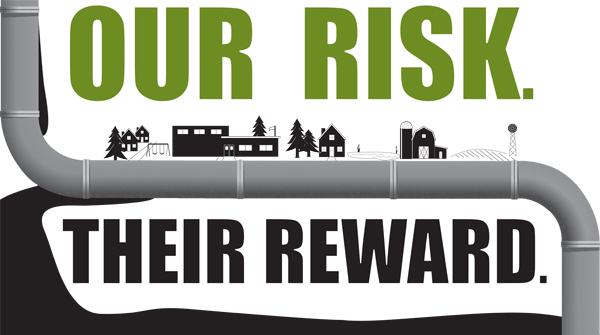Like this article? Chip in to keep stories like these coming.
![]()
TransCanada has inked a deal with natural gas distributors. This ends a high-profile conflict standing in the way of TransCanada’s Energy East ambitions. Natural gas distributors in Ontario and Quebec say the deal insulates consumers from increased costs associated with converting the up-to-40-year-old natural gas pipeline set to carry oil from Saskatchewan through to Ontario. But there’s something TransCanada and natural gas distributors aren’t telling us.
Energy East still means paying more for natural gas bills in Ontario and Quebec.
While we are being told the deal addresses the concern of taxpayers subsidizing the costs of conversion, and increases the new pipe’s capacity to feed natural gas to Ontario and Quebec, it says little about the source of the new gas.
The now expanded Eastern Mainline, from Markham to Iroquois, is set to replace the gas that currently flows through the TransCanada mainline pipe. This new pipe would allow more flow from the Dawn Hub, a storage facility in Lambton County Ontario. The Dawn Hub is supplied by several pipelines, in large part from imports originated in the Marcellus, Utica and U.S. Northeast shale plays.
While the Prairies are also heading towards more and more fracking for shale gas, existing supply to Ontario and Quebec still includes conventional natural gas which does not have nearly the same level of social and environmental impacts. For more on fracking, check out this campaign.
Increasing the volume we consume in Ontario and Quebec will worsen impacts for people living in these areas, actively fighting against fracking for shale gas near their homes and communities. Fighting to end flaming tap water in nearby homes and a new energy source with a carbon footprint greater than coal, according to a Stanford professor.
Not only would becoming more reliant on fracked gas imports cause further environmental and social problems around fracked wells, shale gas won’t stay low cost for long. Fracking activists are already winning bans, moratoriums and increased regulation on shale gas which will make shale gas less available and more expensive.
We can back up this claim. In 2010 we worked with three experts to present evidence to the Ontario Energy Board on a separate pipeline proposal indicating just this — more fracked gas imports means higher costs, less availability and more carbon pollution. You can read that expert evidence here.
So why shift to fracked gas and not see the writing on the wall? The Eastern Mainline is is part of a bigger shift of supplying Ontario and Quebec with fracked gas imports from the U.S. This is happening thanks to the primarily de-regulated, market-based electricity system we have — see the section on market liberalization in this report. Market interests are shortsighted by design. Market signals and pricing differentials are shifting long-term infrastructure decisions towards supply sources that are currently low cost.
What can we do? Join the campaign to stop Energy East (be in touch to find a local campaign near you) which is bad for our climate, threatens over 1,000 waterways with a diluted bitumen spill from a pipe owned by a company with a questionable safety track record and would violate Indigenous rights which includes the right to say no.
Like this article? Chip in to keep stories like these coming.
![]()




